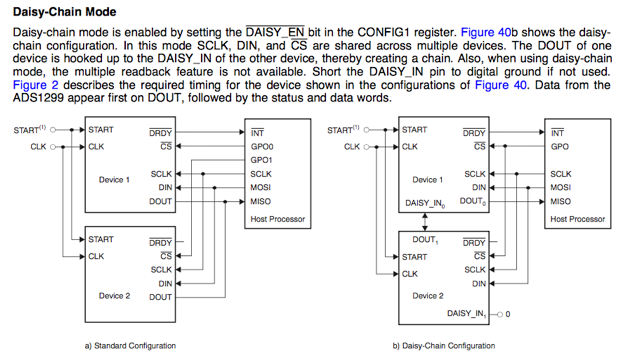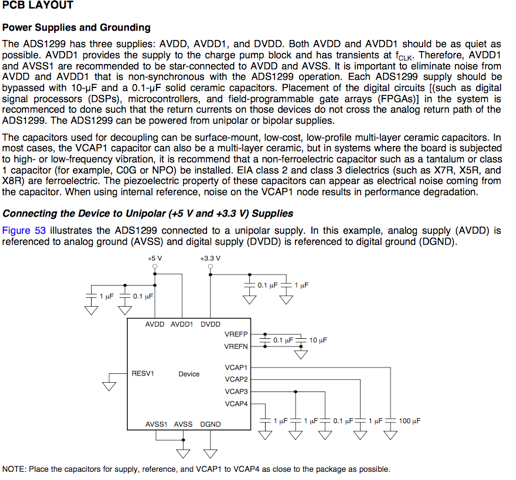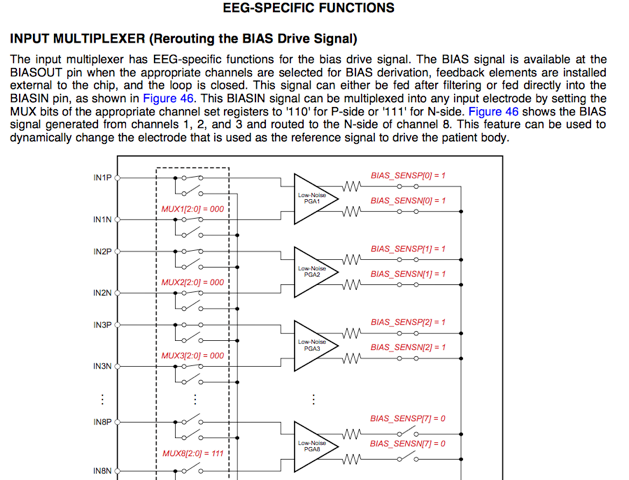Hi Team,
Our customer is using the ADS1299IPAGR (24-bit, EEG DAC), along with TPS73225/72325s wondering if:
1) +2.5V/-2.5V supply filtering is necessary for each individual implementation of one of these ADCs? Or could a pair of them share a supply filter? They plan on configuring the ADCs in a Daisy-Chain config. It stands to reason that each ADC might need its own isolated supply, but I don’t see it explicitly stated in the datasheet as shown below.
2) Is there a mode where we would be able to route two specific channels in a
differential pair to one-another? That is, instead of a each channel pair (in bipolar mode) being connected to an amp, we would instead route the positive
side of one channel, to the negative side of another? I can see where there is some description involving input multiplexing for EEG specific functions, but
it seems to pertain to the BIAS drive signal only.
Thanks for your help!
,Nabeel



